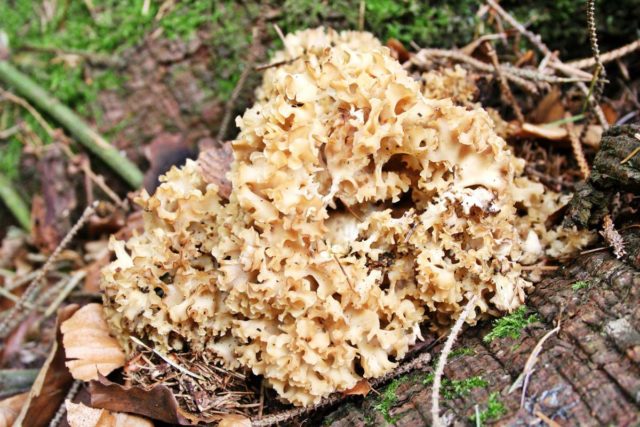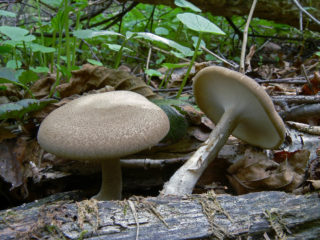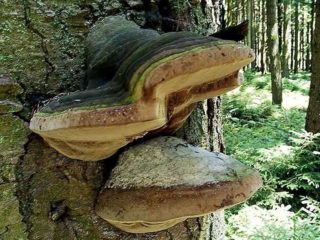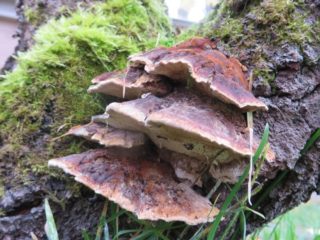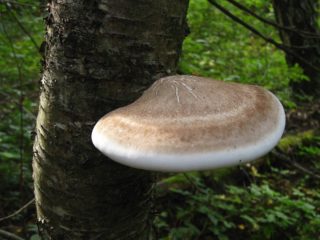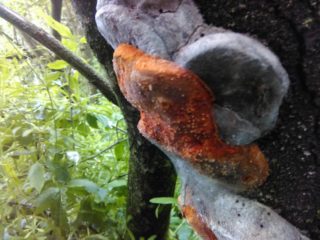Content
The branched tinder fungus, or the umbrella griffin, is a conditionally edible representative of the Polyporov family. The mushroom is unusual, bushy, widespread in the European part of Russia, Siberia and the Urals. In cooking, it is used fried, boiled and canned.
Where does the branched tinder fungus grow
This representative of the mushroom kingdom is rare due to deforestation, therefore the species is listed in the Red Book. Since it is a saprotroph, it can be seen on woody substrates, roots of deciduous trees, dead wood and on stumps. Fruiting from July to late October. To recognize the umbrella griffin, you need to view photos, videos and read the description.
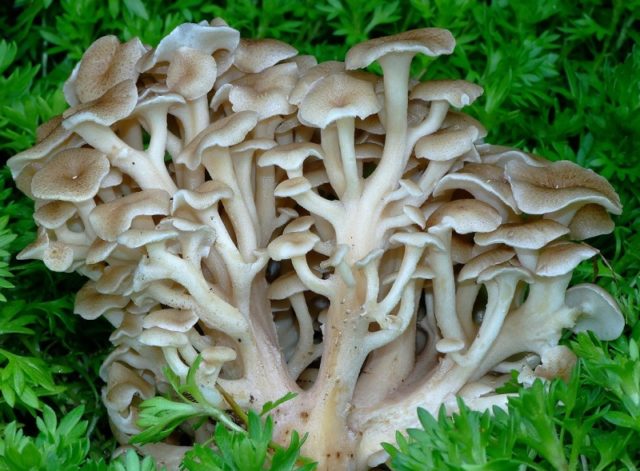
An interesting specimen growing in the form of a beautiful bush
What does an umbrella griffin mushroom look like?
The branched polypore has an unusual appearance for a fungus. Fruiting bodies in the amount of up to 200 pieces grow together, forming a beautiful branched bush. The hat is small, has a wavy surface with a shallow depression in the center. The scaly skin is light coffee or gray in color.
The pulp is dense, fleshy, with a pleasant mushroom aroma and taste. The legs, painted to match the cap, coalesce together, forming a strong mushroom trunk that goes into the woody substrate. Reproduction occurs in tubular, angular, whitish spores, which are located in a yellow-white spore powder.
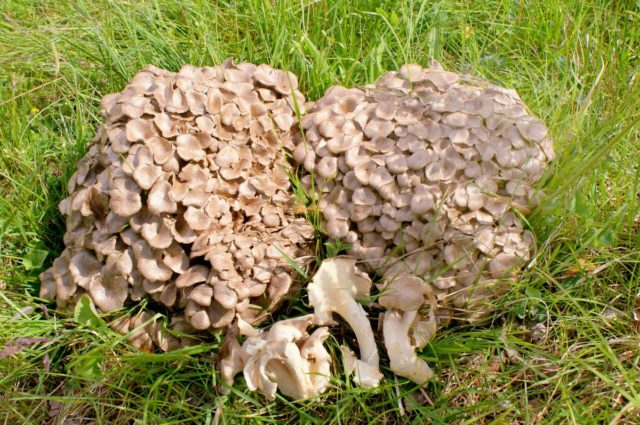
Mushrooms grow in a woody substrate, in a well-lit place
Is it possible to eat the branched griffin
The branched polypore belongs to the 4th group of edibility, to the group of conditionally edible gifts of the forest. After heat treatment, it can be fried, stewed, salted and pickled, and also used for making soups, pie fillings. It is recommended to eat young specimens, since the old ones have hard and bitter flesh.
The branched polypore is nutritious and low-calorie, therefore it is recommended to be consumed by people who are on a diet. But since mushroom dishes are considered heavy food, they should not be consumed 2-3 hours before bedtime. They are also prohibited for children and people with gastrointestinal diseases.
Cooking umbrella griffins
The fruit body contains a large amount of nutrients, therefore, when eaten, it has a beneficial effect on the body. With regular use of branched tinder fungus, you can get rid of the following diseases:
- The species has an antibacterial effect, improves immunity and fights hidden infections.
- Due to acids and glycosides, slags, toxins are removed from the body, the level of bad cholesterol in the blood decreases.
- Thanks to antioxidants, mushroom broth stops the growth of cancer cells.
Branched tinder fungus is often used in cooking because of its sweetish taste and pleasant mushroom taste. Before cooking, the mushroom harvest is thoroughly washed and cleaned.Then it is boiled in salted water for about 15-20 minutes and begins to prepare various dishes. You can prepare from it:
- roast;
- soups;
- filling for pies;
- conservation for the winter;
- mushroom caviar;
- sauces.
Also, the harvest from the forest can be prepared for the winter. To do this, it is dried and stored in paper bags for no more than 1 year.
False doubles of the fungus tinder fungus
The griffin of the umbrella grifolaumbellata, like any forest dweller, has similar cousins. But since this species has no inedible counterparts, you can safely go on a mushroom hunt. Similar in terms of external descriptions include:
- Leafy - edible, rare representative. Grows in deciduous forests, on decaying woody substrate. Due to a decrease in the population, the species is listed in the Red Book, therefore, if a find is found, it is better to pass by and let the species multiply. It can be recognized by a large bush, in which there are fused mushrooms with a dense leaf-shaped cap and a thin, fleshy leg. The yellow-whitish pulp has a sharp nutty taste and smell.
Delicious species listed in the Red Book
- Mushroom cabbage - this representative of the forest kingdom is an edible Red Book. It grows on dead coniferous wood, begins fruiting from July to October. Outwardly, the forest dweller looks like a ball formed from numerous accrete curly lobed specimens of snow-white or light brown color. The pulp is dense, fleshy, colored in a light coffee color. The color does not change with mechanical damage. In cooking, mushrooms are used to prepare fried, boiled dishes, they can also be frozen or dried for the winter.
Used in cooking fried and boiled
Collection rules
Experienced mushroom pickers compare the collection of branched tinder fungus with cutting flowers. The found specimen is cut with a sharp knife at an acute angle, taking care not to damage the blade and mycelium. The mushroom harvest is placed in baskets with the caps down, so that they do not come into contact with each other.
If there is no time to go to the forest for mushrooms, then you can grow a branched tinder fungus at home. There are two ways to grow:
- In a room with natural light, with high humidity and a temperature not exceeding + 20 ° C. Corn cobs, twigs, sawdust or shavings are used as a nutrient substrate. The prepared nutrient medium is poured with boiling water and, after cooling, the mycelium is laid, at the rate of 100 g per 35 kg. The mixture is placed in polyethylene bags with cut holes. Shoots appear in a month. For rapid growth and development, the substrate must always be moist.
- The branched polypore can also be grown naturally. In this case, the first crop will appear no earlier than 4 months after planting. A rotten stump or logs soaked in warm water for 4 days are suitable as a substrate. In the planting site, incisions are made and the mycelium is placed. The bars are stored in a cool, shaded area. Under favorable conditions, fruiting occurs 5 times a season.
Conclusion
The branched polypore is a rare, tasty and beautiful representative of the mushroom kingdom. Grows as a bush on a woody substrate in deciduous forests. Fruiting during the entire warm period, in cooking it is used in fried, stewed and canned form. Since the branched tinder fungus has no false counterparts, it cannot be confused with inedible representatives.

